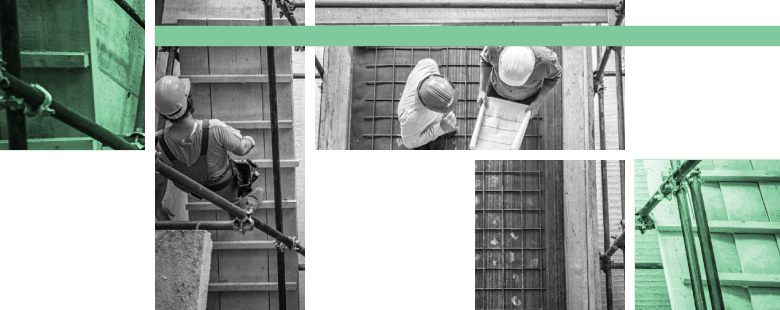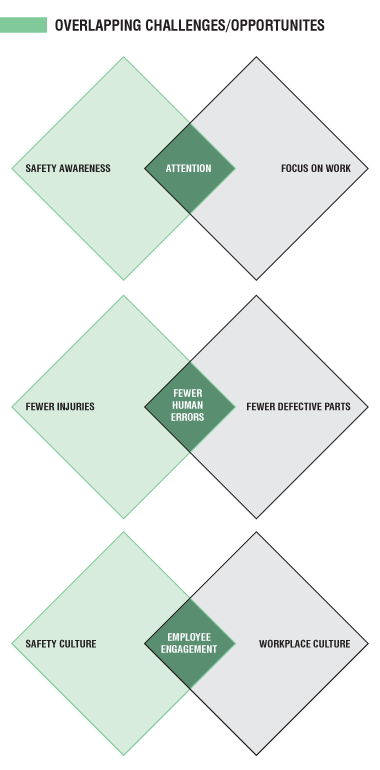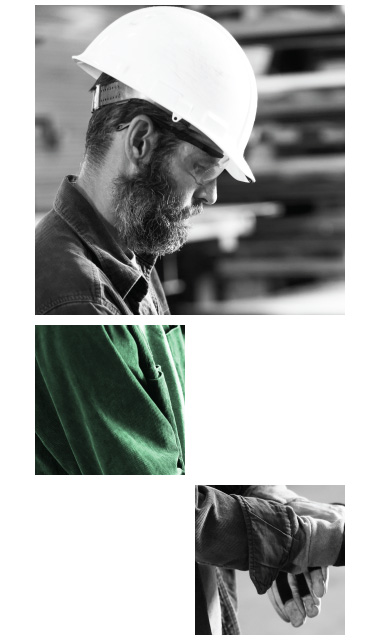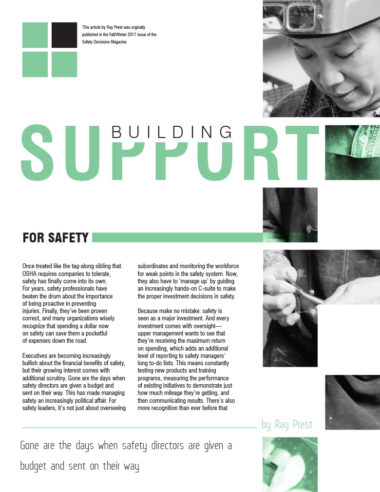by Ray Prest
Once treated like the tag-along sibling that OSHA requires companies to tolerate, safety has finally come into its own. For years, safety professionals have beaten the drum about the importance of being proactive in preventing injuries.
Finally, they’ve been proven correct, and many organizations wisely recognize that spending a dollar now on safety can save them a pocketful of expenses down the road.
Executives are becoming increasingly bullish about the financial benefits of safety, but their growing interest comes with additional scrutiny. Gone are the days when safety directors are given a budget and sent on their way. This has made managing safety an increasingly political affair. For safety leaders, it’s not just about overseeing subordinates and monitoring the workforce for weak points in the safety system. Now, they also have to ‘manage up’ by guiding an increasingly hands-on C-suite to make the proper investment decisions in safety.
Because make no mistake: safety is seen as a major investment. And every investment comes with oversight— upper management wants to see that they’re receiving the maximum return on spending, which adds an additional level of reporting to safety managers’ long to-do lists. This means constantly testing new products and training programs, measuring the performance of existing initiatives to demonstrate just how much mileage they’re getting, and then communicating results. There’s also more recognition than ever before that improvements in safety can have a positive effect in other areas of the company—including operations and production.
Gone are the days when safety directors are given a budget and sent on their way

Safety and productivity are so closely linked because they operate on the same principles. The risk of injury is lowest when workers are paying attention to the task at hand and following a safety process to the letter. And productivity is at its peak when employees are focused on what they’re doing and avoid deviating from the work process. In this regard, safety and operations both traffic in attention. So it makes sense that the fates of the two functions are intertwined.
Smart CEOs, CFOs and plant managers know this—and it leads them to solicit a broad range of views when it comes to cutting a cheque for the company’s next safety initiative. Even those with the power to make big decisions on their own often seek consensus from their senior leaders instead of making a unilateral decision.
Management must see how safety will affect productivity. They need to see what impact safety will have on company morale. And because safety affects every department, management wants—and needs—buy-in from everyone for any initiative to be successful.
 The growing trend towards consultation changes the safety game in a big way. It’s not enough to pull together some numbers for a financial decision-maker. Consensus now rules the day. That means safety leaders need support from the director of operations, maintenance managers, the HR department, and other voices in the company. Without it, the safety person’s voice is likely to be drowned out in a sea of competing priorities.
The growing trend towards consultation changes the safety game in a big way. It’s not enough to pull together some numbers for a financial decision-maker. Consensus now rules the day. That means safety leaders need support from the director of operations, maintenance managers, the HR department, and other voices in the company. Without it, the safety person’s voice is likely to be drowned out in a sea of competing priorities.
Getting a disparate group of people all singing the praises of a new safety initiative can be tough, but it’s essential. Safety professionals should consider it a prerequisite for getting the green light to go ahead with the purchase.
As for how to go about doing so, the trick is to examine the benefits of the safety training and then reframe them for each company stakeholder or functional group.
Most safety vendors pitch their products and services to safety professionals. So they talk a lot about injury reduction, better safety engagement, and more reliable data. But in my experience, the biggest challenge in implementing a new safety solution isn’t identifying the safety need, selecting a vendor solution, or confirming expected safety results. It’s in helping an organization come to a decision within this new group decision-making reality.
On average, there are a half dozen stakeholders involved in company-wide buying decisions, each with different perspectives, their own agendas, and their own experience. Corralling and convincing these people to invest in safety is not easy—which is why some vendors work with safety professionals to help them with this process—but it is very doable with a strategic approach.
There’s a saying that 50% of any solution is in the clear definition of the problem; it’s the first step in helping people understand that change is required. And to do that, you need to start asking questions. If you’re asking the right questions, insight and solutions will become apparent and light bulbs will go off across the company. Objectives will align and group decisions will become easier to make.
There’s a saying that 50% of any solution is in the clear definition of the problem; it’s the first step in helping people understand that change is required
 Here’s a good place to start: ask your operations leader what their biggest challenges are. Ask your quality control leader the same thing. Unless your company is very much behind or ahead of most organizations, you will likely see a strong correlation between their problems and your top safety challenges: engagement, human error, or occasional non-compliant actions or shortcuts. Now it’s up to you to help them take a step back and see how the problems overlap. Attention isn’t a limited commodity—it’s a muscle that gets stronger with use. Improved focus on safety will mean better attention to work activities, resulting in fewer defects. Similarly, engagement in safety means engagement across the board.
Here’s a good place to start: ask your operations leader what their biggest challenges are. Ask your quality control leader the same thing. Unless your company is very much behind or ahead of most organizations, you will likely see a strong correlation between their problems and your top safety challenges: engagement, human error, or occasional non-compliant actions or shortcuts. Now it’s up to you to help them take a step back and see how the problems overlap. Attention isn’t a limited commodity—it’s a muscle that gets stronger with use. Improved focus on safety will mean better attention to work activities, resulting in fewer defects. Similarly, engagement in safety means engagement across the board.
Because most companies and most departments within them have already put systems and procedures in place, the key common denominator to overcoming challenges across all functional groups is people. The lesson here is to pay keen attention to what other departments are looking for and then explicitly frame safety as a solution to their problems.
Help other department heads make the connection between your safety initiative and how it could help with their most pressing issues. Tell them you’ll look for a safety initiative that could help them—but that you’ll need their support when it comes time to ask the CEO to sign off. If you’re struggling, rely on your potential safety solution providers. They’ve probably already made this connection in similar companies and situations. Safety solution providers can help you build a common bond between you and other stakeholders that will swing their vote your way when decision time comes.
Help other department heads make the connection between your safety initiative and how it could help with their most pressing issues
There are a number of convenient benefits that come from group support in decisions on implementing a new safety initiative. Each leader will be equally invested in seeing that it is successful, so they will do everything they can to support the implementation and keep it alive. After all, they were involved in the decision and share ownership of its success or failure.
Because they’re engaged in the safety process, you won’t need to do as much leadership training or coaching—leaders will have the information they need to effectively communicate with their supervisors and staff. And each functional group will be aligned and heading in the same direction, which will help with alignment and culture throughout the organization. Finally, it puts safety at the same level as the other departments. This can further reduce the safety-versus-production debate and help instill safety as a core value.
If all of this requires spending a bit of time talking to find out where your goals dovetail then so be it. It’s a small price to pay to build the organizational support you need to secure the budget for your next safety initiative.
Ray Prest is the Director of Marketing at SafeStart, a safety company focused on human factors solutions that reduce preventable death and injuries on and off the job. A columnist for Safety Decisions since 2015, Ray’s been helping people learn about safety and training for over 20 years. Read more at safestart.com/ray.

Get the PDF version
You can download a printable PDF of the article using the button below.

